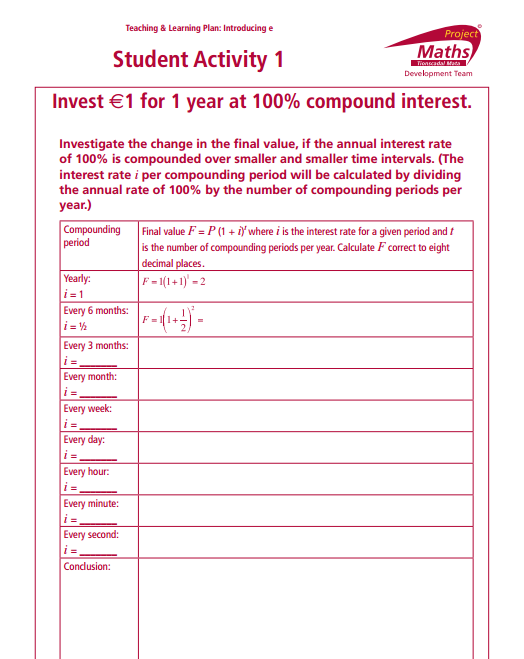In my capstone class for future secondary math teachers, I ask my students to come up with ideas for engaging their students with different topics in the secondary mathematics curriculum. In other words, the point of the assignment was not to devise a full-blown lesson plan on this topic. Instead, I asked my students to think about three different ways of getting their students interested in the topic in the first place.
I plan to share some of the best of these ideas on this blog (after asking my students’ permission, of course).
This student submission comes from my former student Trenton Hicks. His topic: working with the half-life of a radioactive element.
How can this topic be used in you students’ future courses in mathematics or science?
The topic of half life is a direct intersection of math and chemistry. In addition to being a common precalculus problem, we see half life come up in radioactive decay in chemistry. Half life is a concept that extends all the way into upper college chemistry, physics, and even archaeology when it comes to carbon dating. If students use carbon dating to any extent, they can use half life to determine the age of organic material since carbon 14 is radioactive (Wood). Since half life has to due with nuclear chemistry, this can also tie into nuclear power, since half life is crucial in computations related to efficiency and nuclear engineering. Half life is a form of exponential decay. If students have a thorough understanding of half life, they can better understand other natural phenomena that exhibit properties that are consistent with exponential decay. These phenomena include RC circuits, atmospheric pressure, and toxicity.
In Chernobyl Ukraine, 1986, there was a disaster at a nuclear power plant that has had lasting effects on the environment, people, and culture. The initial explosion was harmful enough, as 2 people lost their lives. Furthermore, radiation leaked into the atmosphere, and it’s speculated that many individuals are suffering the health consequences. When this story first broke, it shook everyone, and scared people away from nuclear power. Lately, there was another documentary that came to light about the incident from HBO. Many people don’t know that the former power plant is still very dangerous to this day. Why? Because the highly radioactive byproducts of the meltdown have half lives that makes them stick around for quite a while. One particularly dangerous isotope, caesium 137, has a half life of about 30 years. This means that in 2016, about half of the caesium decayed. Half of the sheer amount of caesium that was leaked due to the meltdown is still an enormously dangerous amount. News and documentaries report that there’s still a massive constructive effort to contain the radiation. Showing these news stories to students will convey the importance of half life and give them a little bit of insight into how much care should be given to nuclear power.
Half life began as a model proposed by Rutherford in the late 1800’s and very early 1900’s. Rutherford discovered that radioactive decay would turn one element into another. This change happens at a rate that we recognize as exponential decay, hence the model we use is consistent with that idea. Rutherford’s work would soon earn him a Nobel Prize. Other disciplines have taken the idea of “half life,” and have created convincing arguments for how the universe behaves. For instance, toxicology uses half life to convey how potent a dose of toxin is versus long it takes for the body to metabolize the toxin. Another notable development is the blog post on the fs website (linked below) that discusses half lives in terms of how our brains retain information, as well as the information itself. Relaying that half life isn’t just a chemistry or math topic to students, and providing them with this history might just increase the half life on their retaining of the concept.
References:
Fs blog:
Sources:
Author: Rachael Wood
https://theconversation.com/explainer-what-is-radiocarbon-dating-and-how-does-it-work-9690#:
~:text=Radiocarbon%20dating%20works%20by%20comparing,but%20different%20numbers%2
0of%20neutrons.&text=While%20the%20lighter%20isotopes%2012,C%20(radiocarbon)%20is
%20radioactive
Click to access ExponentialDecay.pdf
https://www.greenfacts.org/en/chernobyl/toolboxes/half-life-radioisotopes.htm





